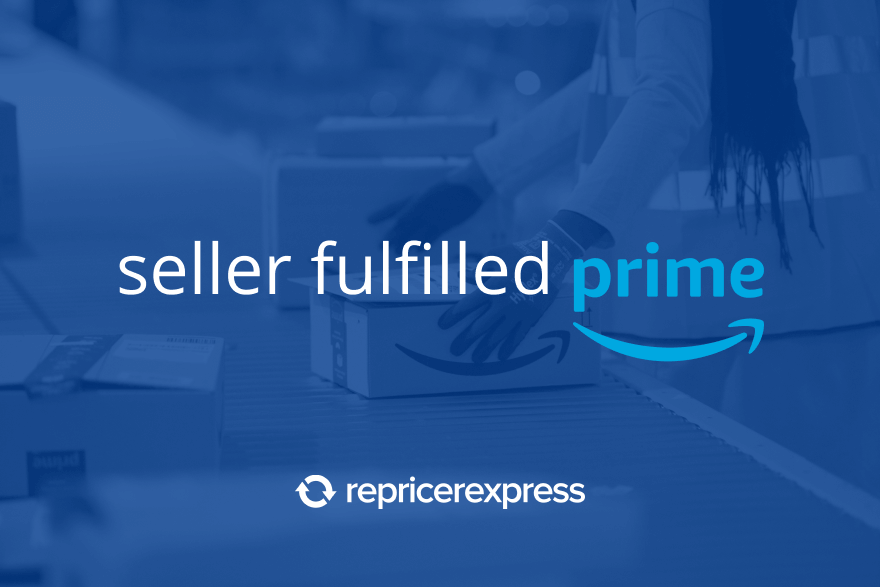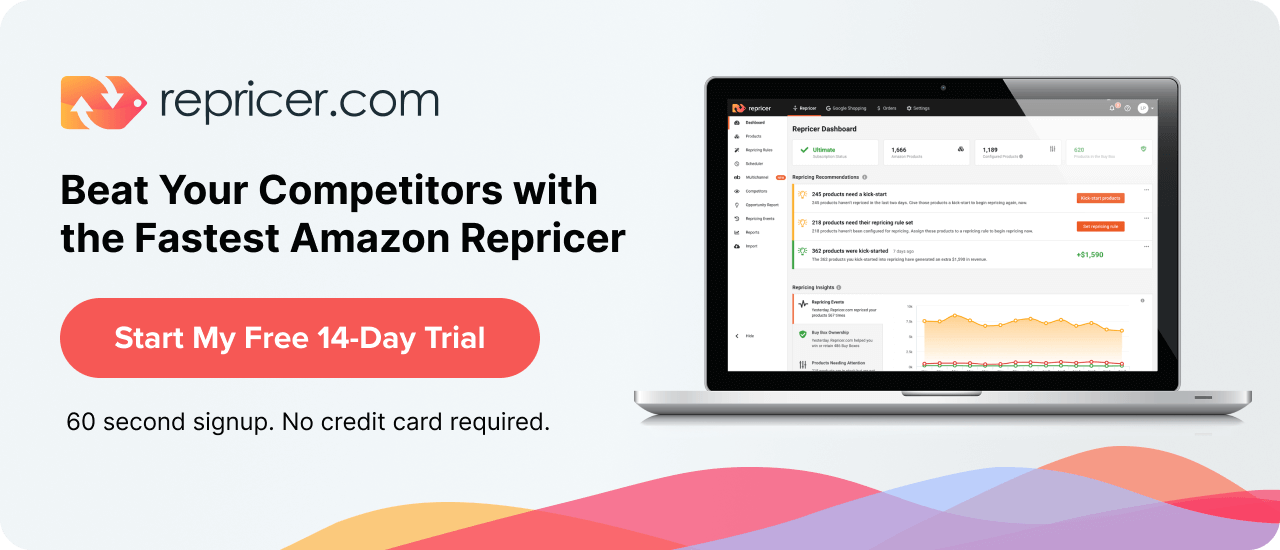Guest post by Michael Krakaris, co-founder of Deliverr
If you’re interested in getting on Amazon Seller Fulfilled Prime or Amazon SFP, but you’re unsure how best to achieve it, then this blog is for you.
With more than 100 million customers, Amazon Prime is attractive to any online seller. But, with strict fast shipping requirements and ongoing targets, you want to know how best to reach those customers without it damaging your profits, reputation, or business.
We’ll cover the eligibility requirements of SFP, and different aspects to consider for in-house versus outsourced SFP.
What is Amazon Seller Fulfilled Prime
Let’s quickly recap. Back in the day, if you wanted to sell under the Amazon Prime badge, you had to use Fulfillment by Amazon (FBA). In 2016, things changed with the announcement of Seller Fulfilled Prime (SFP) and the ability to qualify for Amazon Prime by fulfilling orders yourself or outsourcing to a fulfilment partner.
The main differences between SFP versus FBA are:
- Your stock is stored in your warehouse or your fulfilment partner’s warehouse;
- You choose your own shipping carrier or 3PL;
- You are responsible for sending items for free, within two-days;
- You avoid FBA’s fees for long-term storage, heavy items, and multi-channel orders; and
- You can sell non-FBA eligible items under the Prime badge.
SFP eligibility requirements
But SFP isn’t available to everyone. Amazon wants to protect its Prime reputation and, accordingly, has set some pretty high eligibility requirements for selling via SFP. Specifically, you must:
- Have an on-time shipment rate of 99%;
- Maintain a cancellation rate of <0.5%;
- Have a 99% valid tracking rate;
- Use Amazon Buy Shipping for at least 98% of orders;
- And more.
Learn about the full requirements here
So how exactly do you go about achieving those metrics?
Achieving SFP: In-house vs outsourced fulfilment
Online sellers looking to qualify for SFP have two options:
- Fulfilling orders in-house, using your own warehouse, staff, and shipping carrier; or
- Using an outsourced fulfilment solution, sending your stock to their warehouse for them to pick, pack, and ship.
And here lies your conundrum: which is best for your business? To help you choose between in-house or outsourced SFP fulfilment, let’s take a look at the following:
Becoming eligible
Meeting the eligibility requirements of SFP is a tough task; one that is only going to get tougher with the introduction of standard one-day free delivery. Achieving this in-house is a huge achievement – demonstrating an outstanding, efficient, and well-thought-out fulfilment process.
But, if you don’t have the expertise, space, or staff to achieve the SFP metrics in-house, that shouldn’t deter you. Outsourcing fulfilment to experts in fast shipping can guarantee you both initial and ongoing qualification for SFP with on-time deliveries, prompt tracking information, and excellent customer service.
Maintaining control
Outsourcing your SFP fulfilment means outsourcing control over your fulfilment process. If you’re just starting out as an Amazon seller, you might not be ready to let go of that control – preferring to gain hands-on experience of every aspect of your business. In this case, in-house SFP is your best bet.
As you grow, and your time gets more scarce, you may find it more difficult to handle order volume. Start with good processes in place, select the right inventory software, and stay on top of your pick, pack, and shipping to maintain your Prime tags.
Outsourcing fulfilment means you’ll hand over your control, but gives you time, efficiency, and SFP qualification in return.
Reducing costs
FBA is one of the most inexpensive fulfilment methods around there. Their processes and warehouses are so well-managed that it’s hard to find any other fulfilment service that can beat them in terms of speed and price.
But if you’re going for SFP, the cost can be a trickier beast. Be sure to calculate your fulfillment costs to understand whether it’s more cost effective for you to fulfil in-house or outsource. Think about warehousing, staff, packing, inventory management, security, shipping, and insurance.
Those costs can add up both in-house as well as with typical 3PLs. Deliverr is an outsourced fulfilment service with just two all-inclusive fees; fulfilment and storage. This setup, similar to how FBA is priced, ensures simple and transparent costs throughout.
Inventory efficiency
Some online sellers like having their inventory close by – so that they can see, touch, inspect, and admire it. If you want to keep your inventory close to you, it’ll be best to fulfil in-house. Be sure to secure that stock, keep your tracking accurate, and optimize your inventory.
Having your inventory all in one place is useful, but when you’re fulfilling in-house it can impact speed (unless you have multiple warehouses around the country).
If you want to go for ultimate inventory efficiency and keep all of your items in one place while still fulfilling at Prime-level speeds, it’s a good idea to outsource to one company that can ensure fast shipping tags and high-quality service on any marketplace.
Packaging considerations
Many third-party fulfilment services prevent you from using branded boxes – it’s costly and slows down the entire fulfilment process, impacting upon the ability to meet SFP’s shipping deadline. If personalized or branded packaging is essential to your unboxing experience, you’ll need to fulfil orders (or at least some of your orders) in-house.
Maintaining consistency
66% of online shoppers consider fast delivery as the most influential factor in cart abandonment – so it isn’t just Amazon Prime customers who want fast shipping.
Meeting SFP shipping speeds in-house requires a significant amount of resources, so be careful not to let this impact your ability to offer similar shipping speeds to non-Prime customers.
An outsourced fulfilment solution delivers products Prime-quick, regardless of where that order originated from – allowing you to offer a competitive and consistent service to all of your customers.
Achieving scalability
Finally, in-house SFP is great for low volume Amazon sellers, but what if you want to grow? Can your in-house fulfilment operation expand to multiple sales channels and fast shipping programs, without affecting your shipping speeds or profits?
A multi-channel SFP fulfilment partner also enables you to expand into multi-channel selling and other fast shipping programs using their space, expertise, staff, and geographical locations to do it in the quickest and cheapest method possible. And, because you won’t be fulfilling orders yourself, you’ll have more time to develop and market your store, to keep the growth going.
How to choose the right SFP fulfilment for your business?
Outsourcing your SFP fulfilment to a third-party comes with plenty of benefits and considerations. The above is just a brief overview of some of those benefits and considerations to take into account.
So how should you make the final choice?
Price check – use a fulfillment cost calculator to see how much outsourced fulfillment can cost or save you.
Research providers – do your research into SFP fulfillment providers and ask the right questions to find the ideal fulfillment solution for your business.
Trial products – you don’t have to make a decision for your entire inventory. Once you’ve found an SFP fulfillment partner you like, trial just a few of your products first.
Finally, choose the Amazon fulfillment strategy that is right for you and your business. If you’re saving money but working evenings, weekends, and vacations – maybe you need to think again.



